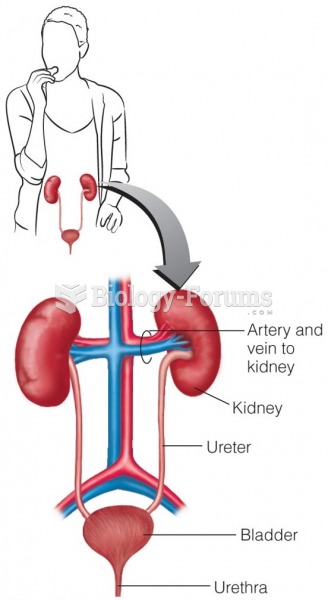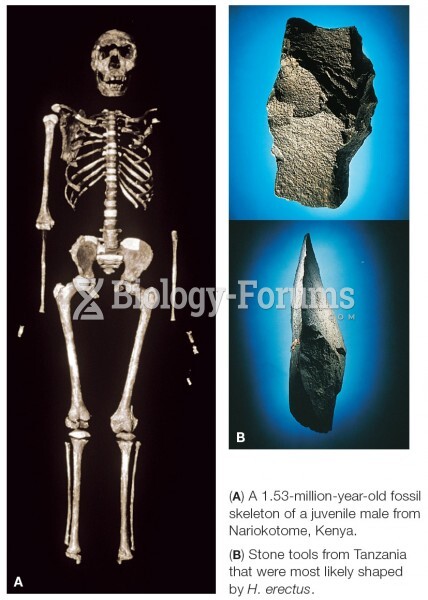|
|
|
Most childhood vaccines are 90–99% effective in preventing disease. Side effects are rarely serious.
If you use artificial sweeteners, such as cyclamates, your eyes may be more sensitive to light. Other factors that will make your eyes more sensitive to light include use of antibiotics, oral contraceptives, hypertension medications, diuretics, and antidiabetic medications.
All patients with hyperparathyroidism will develop osteoporosis. The parathyroid glands maintain blood calcium within the normal range. All patients with this disease will continue to lose calcium from their bones every day, and there is no way to prevent the development of osteoporosis as a result.
The people with the highest levels of LDL are Mexican American males and non-Hispanic black females.
Bacteria have been found alive in a lake buried one half mile under ice in Antarctica.







